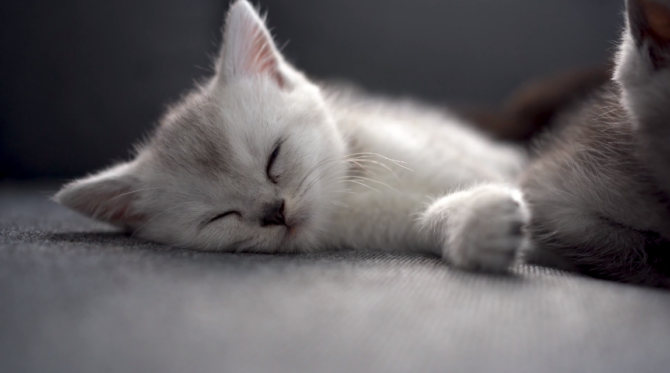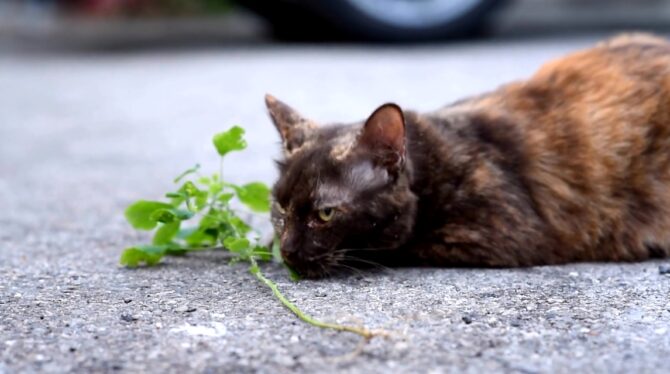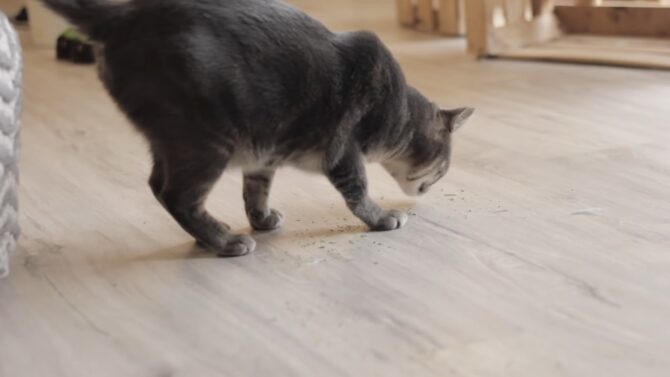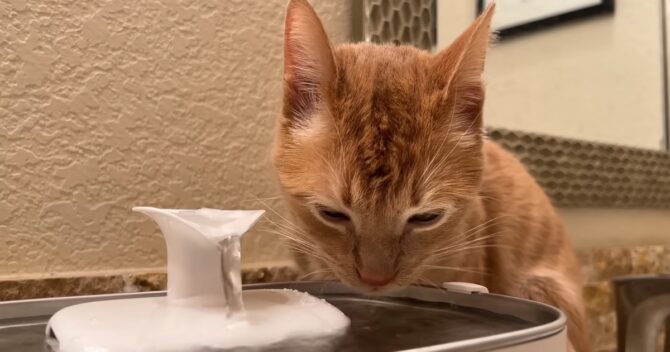Catnip, scientifically named Nepeta cataria, is often deemed the “cat drug” due to its intriguing, sometimes hilarious, effects on our feline friends. This naturally occurring plant has been a subject of fascination for cat owners and researchers alike, leading to a wealth of knowledge about its properties and impacts on cats. This article discusses catnip, explaining its effects and providing valuable insights for cat owners.
The Basics
Catnip, part of the mint family, is renowned for its ability to induce a state of euphoria in cats. Below, we explore its origins, chemical components, and the reasons why it affects cats in such unique ways.
Origins and Components
It originated from Europe and Asia and is now widely found throughout North America and New Zealand. This perennial herb contains a compound called nepetalactone, which is responsible for affecting cats’ behavior.
Nepetalactone is found in the leaves, seeds, and stems of the plant. When cats come into contact with it, this compound interacts with their nasal tissues, inducing a range of behaviors from rolling, flipping, rubbing, and eventually zoning out.
These effects last about 10 to 15 minutes, after which cats seem to lose interest. Interestingly, not all cats respond to catnip, as susceptibility is hereditary, with approximately 30-50% of cats being immune to its effects.
Why Cats Love It

Cats’ attraction to this plant is not fully understood, but it is believed to simulate feline “happy” pheromones. When a cat encounters it, it acts as a stimulant, inducing a euphoric state that usually involves a lot of playful behaviors.
- Pleasure and Playfulness: Many cats exhibit a heightened level of excitement and playfulness, rolling around, purring, and chasing invisible prey.
- Aggression: Some cats might display signs of aggression, becoming more possessive over the catnip or toys laced with it.
- Sedation: Post catnip-exposure, cats often exhibit signs of relaxation and sometimes fall asleep.
Effects on Different Cats
Catnip doesn’t affect every cat in the same way, and its influence can be particularly varied depending on the cat’s age, breed, and individual disposition. Here, we will talk about how this plant affects kittens, adult cats, and senior cats differently.
Kittens

Kittens, especially those under three months, generally do not respond to catnip. It is postulated that they lack the necessary development in their olfactory system to react to the compound.
Kittens, as they grow and develop, might start responding to catnip around the age of 3 to 6 months, coinciding with sexual maturity. However, reactions in young cats can be less pronounced compared to adult cats, and, as mentioned, nearly half of all cats may never respond due to genetic predisposition.
Adult Cats

Adult cats are the most likely to exhibit pronounced reactions to catnip. The exposure leads to a spectrum of behaviors, from euphoric leaps and somersaults to aggressive protectiveness over the catnip source.
Studies show that reactions can vary widely, even among adult cats. Some may exhibit extreme excitement and playfulness, while others might just mellow out and relax. Also, the frequency and intensity of reactions may diminish if cats are exposed to catnip too often, leading to a temporary “immunity.”
Senior Cats
Senior cats, much like their younger counterparts, have varied responses to catnip. Some continue to enjoy its effects, while others may lose interest, possibly due to changes in sensory perception or decreased mobility.
For older cats that still enjoy catnip, it can serve as a form of enrichment, encouraging movement and play, which is crucial for maintaining their physical and mental well-being. For those who seem unresponsive, alternative forms of stimulation and engagement might be more suitable.
Benefits and Uses
Catnip isn’t just a source of amusement for cat owners; it has practical applications and benefits for cats, too. From its utility in training to its role as an enrichment tool, catnip serves various purposes in a cat’s life.
Training and Behavioral Modification

Catnip can be a valuable tool in modifying feline behavior and aiding in training efforts. Sprinkling it on scratching posts can encourage cats to use them instead of furniture.
- Positive Reinforcement: Catnip can serve as a reward, reinforcing desired behaviors in cats.
- Stress Reduction: It can help in reducing stress and anxiety in cats, especially during potentially stressful situations like vet visits or relocations.
Enrichment and Play
Catnip is a wonderful enrichment tool, stimulating cats mentally and physically. It can be used to encourage play, exploration, and exercise, contributing to a cat’s overall well-being and happiness. Toys filled with catnip can keep cats engaged and active, promoting a healthy lifestyle. Additionally, sprays can be used to rejuvenate old toys or beds, maintaining a cat’s interest in them.
Health Benefits
Beyond behavioral and enrichment aspects, catnip has health benefits as well. It has been used traditionally as a mild sedative, and it possesses anti-inflammatory properties. While catnip acts as a stimulant in cats, paradoxically, when consumed in moderate amounts, it can have a calming effect, helping in managing mild stress or anxiety in cats. Additionally, the anti-inflammatory properties of catnip can be beneficial in managing conditions like arthritis in older cats.
How to Use Catnip Responsibly

While the benefits of this plant are plenty, responsible use is crucial to ensure the safety and well-being of our cats. Here, we explore how to introduce this plant to cats, its various forms, and considerations to keep in mind.
Introducing It to Your Cat
When introducing catnip to your cat, start with a small amount to observe their reaction. If your cat enjoys it without showing any signs of distress or aggression, you can consider gradually increasing the amount.
- Gradual Introduction: Start by sprinkling a small amount of catnip on a toy or scratching post and observe your cat’s reaction.
- Observe Behaviors: Note any changes in behavior, such as increased playfulness or aggression, and adjust the amount of catnip accordingly.
Various Forms of Catnip
Catnip comes in various forms, such as fresh leaves, dried leaves, sprays, and even as a component in cat toys. Each form has its own applications and can be used depending on your cat’s preference and the intended use.
- Fresh Leaves: Fresh catnip leaves can be grown at home and are usually more potent. They can be given directly or used to rub on toys and scratching posts.
- Dried Leaves: These are commonly available and can be sprinkled on toys or scratching posts.
- Catnip Spray: Catnip sprays are a convenient way to apply catnip to objects without the mess of leaves.
Considerations and Precautions
When using catnip, it is essential to consider individual cat responses and be aware of any potential negative effects. Observing your cat’s behavior and moderating its usage is key to a positive experience.
- Frequency: Too frequent exposure can lead to desensitization, reducing the plant’s effectiveness over time.
- Individual Tolerance: Every cat is different, and what works for one may not work for another. Adjust the amount and frequency based on your cat’s reaction.
- Avoid Overconsumption: While catnip is non-toxic, consuming it in large quantities can lead to gastrointestinal upset. Ensure your cat isn’t ingesting excessive amounts.
Alternatives
Not all cats respond to catnip. However, several alternatives can invoke similar reactions in cats. For those cats who are indifferent to it, exploring these options can be worthwhile.
Silver Vine
Silvervine, a plant native to the mountainous regions of eastern Asia, is known to induce similar effects as catnip in cats. It contains two active compounds, actinidine and dihydroactinidiolide, which are believed to stimulate cats’ sensory neurons.
Studies suggest that silver vine might be even more popular among cats, with around 80% of cats responding to it. It is available in various forms, such as powder and sticks, and can be used similarly.
Valerian Root
Valerian root is another alternative that can stimulate cats. It contains actinidine, the same compound found in the silver vine, making it an effective cat attractant.
While it can be a great alternative, it is essential to use valerian root moderately as its strong smell can be overwhelming for some cats, and excessive consumption can lead to gastrointestinal issues.
Tatarian Honeysuckle Wood
Tatarian Honeysuckle wood is less commonly known but can serve as another catnip alternative. It contains a compound similar to nepetalactone and can induce similar responses in cats.
Availability can be a challenge, and it is crucial to ensure that it is sourced responsibly, given that the Tatarian honeysuckle plant is considered an invasive species in some regions.
FAQs
Can kittens be harmed by exposure to catnip?
There is no evidence to suggest that it is harmful to kittens. However, kittens under three months typically do not respond to it as their olfactory system is not fully developed, so exposing them to it is generally unnecessary.
Is it possible for a cat to overdose on catnip?
While it is non-toxic and safe for cats, excessive consumption can lead to gastrointestinal upset, such as vomiting or diarrhea. However, serious complications from the “overdose” are extremely rare.
How often should I give my cat catnip?
There’s no strict guideline on how often you can give it to your cat, but it’s generally recommended to offer it no more than once a week to prevent desensitization and maintain its effectiveness as an enrichment tool.
How should I store catnip to ensure its freshness?
To maintain its potency, it should be stored in an airtight container in a cool, dark place, away from direct sunlight. This will help preserve the essential oils (nepetalactone) that cause the reaction in cats.
Can I give catnip to my cat if she is pregnant?
It’s generally safe to give it to pregnant cats in moderation, but excessive exposure can potentially cause issues as it can act as a uterine stimulant. It’s recommended to consult with a veterinarian for advice on using this plant with pregnant cats to ensure their safety.
Can cats build a dependency on catnip?
No, cats do not build a dependency on it. It is non-addictive, and its use can be discontinued at any time without any withdrawal symptoms in cats.
Final Words
Catnip, with its intriguing effects on cats, serves as more than just an entertaining anomaly. Understanding its impacts and uses can help cat owners leverage this herb to enrich their pets’ lives, manage behaviors, and even address certain health concerns.
Whether your cat is a fervent lover of this herb or indifferent to it, knowing more about catnip can only enhance your feline companionship. Remember, while it is generally safe, moderation is key to avoiding any potential negative reactions.
And for those cats who are indifferent to it, there are other safe alternatives like silver vine and valerian root that may invoke a similar response.




